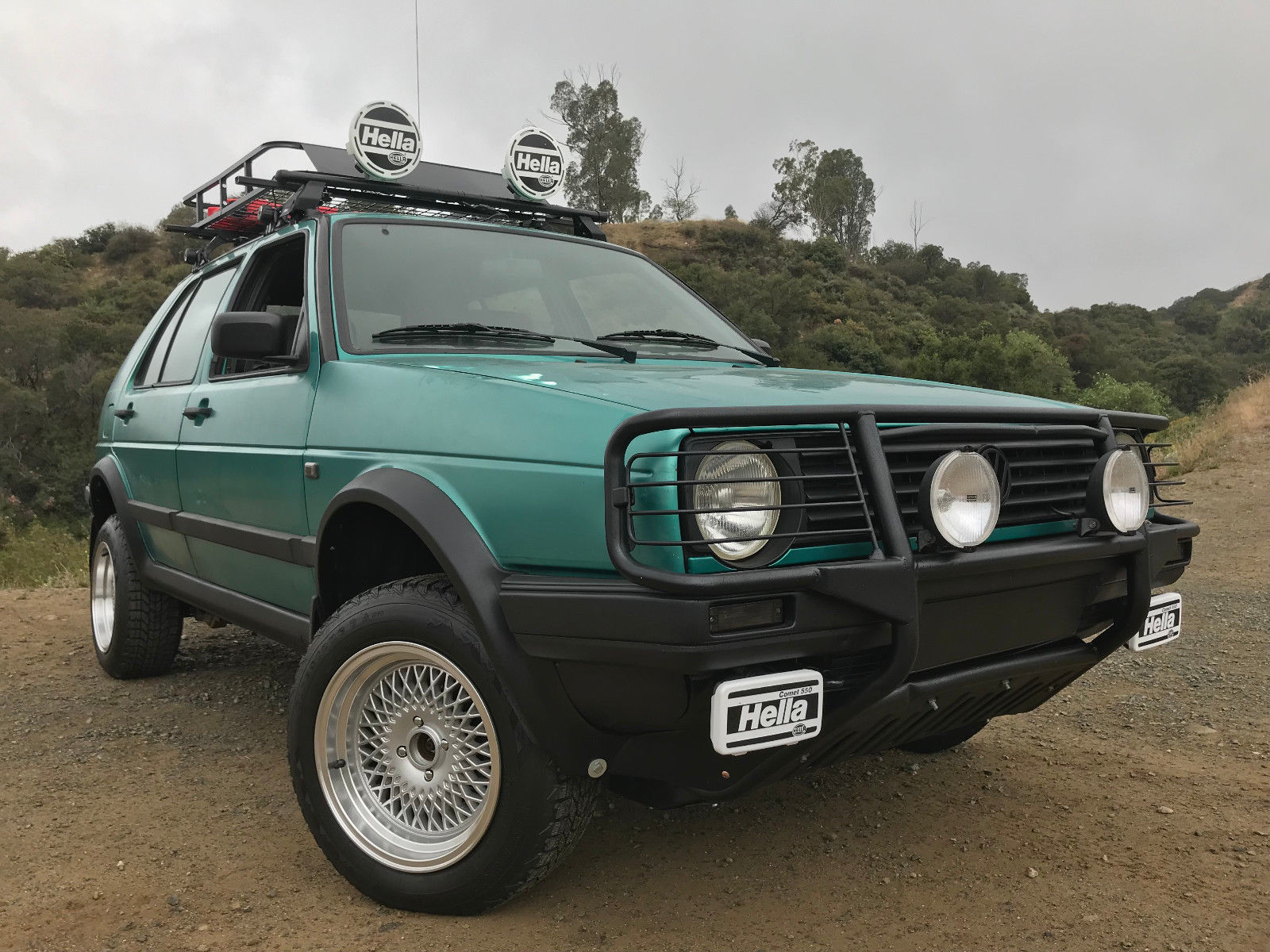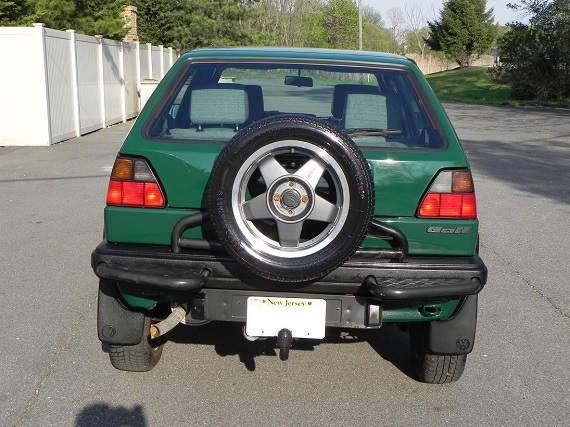I was in Stuttgart in 1998 when what I thought was someone’s version of a good joke rolled by me. It was a dark green Mk.2 Golf; not particularly abnormal since they were still mostly less than a decade old and Germans notoriously care for their cars better than most other nations. However, it was about a half-foot taller than it should have been, equipped with some cool looking Speedline wheels, brush guards and a spare tire mounted to the rear. Germans have an odd sense of humor, so it seemed to fit that this was one mullet short of a Hasselhoff Fan Club. I had no idea that I was looking at a factory model; remember, this was in the infancy of the internet and as an American, knowledge of every single European model of the Mk.2 was hard to come by. But the “Country†graphic scrolled down the side gave me a clue, and after some research I found out that this was more than just a one-off.
Though the idea sounds simple enough since parent company Audi had an all-wheel drive system that was ever so popular, mounting that longitudinal transmission and drivetrain into the transverse engine Golf was impossible. Instead, Volkswagen contracted Steyr-Daimler-Puch to design a viscous coupling setup for the Golf with a new independent suspended rear. Like the contemporary Quantum (Passat) and Vanagon setups, it was dubbed “Syncroâ€, though outside of all-wheels being driven the three systems shared almost nothing.
The result was a few fan-favorite models. Performance types love the Quattro-inspired Golf Rallye, Golf G60 Syncro and Golf Limited models. But undoubtedly the most recognizable Golf to wear the Syncro badge was the jacked-up Golf Country. Utilizing an already heavily modified Golf Syncro, Daimler-Steyr-Puch installed some 438 unique pieces to create the light offroading Golf way before the Outback was conquered by Subaru. Since new, they’ve always commanded a premium and have been the object of lust for American Volkswagen fans who like to do things just a bit different. Now legal for import, they’re popping up time to time:



